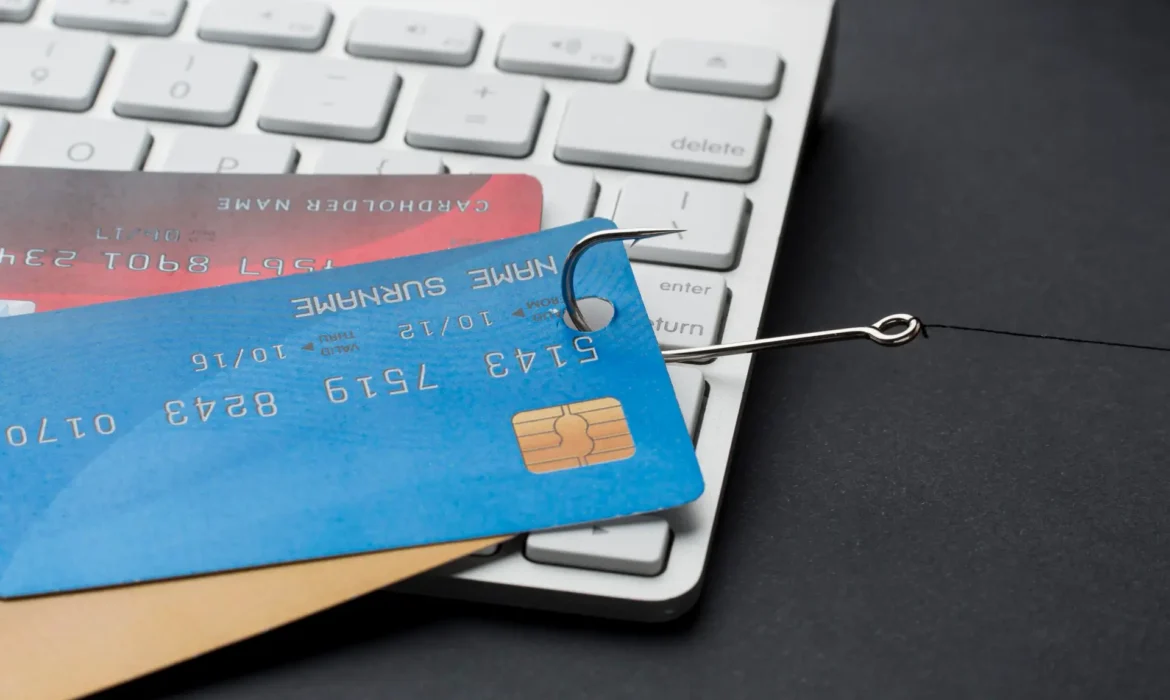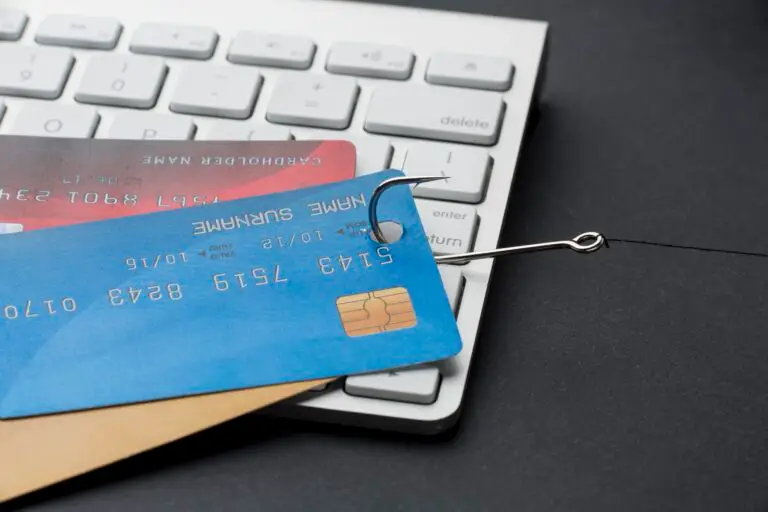

Introduction to Suspending Phishing Domain Names
Phishing domains are websites set up to look like the real thing. They copy a brand’s login page or support portal and trick people into sharing passwords or payment details. The domain is the scam’s engine room. It hosts the fake page and collects the data.
Suspending the domain stops the scam at the root. When a registrar or registry puts a hold on the name, it stops resolving or gets redirected. The fake site goes offline. Fewer people get caught in the scam. Brand damage and clean-up costs reduces. Suspension is quick, high impact, and works alongside email filters, browser warnings, and user training.
Unfortunately, the scale of phishing attacks is huge and even growing. In Q4 2024, nearly 1 million phishing attacks were recorded, up from 933,000 in Q3 (brandsec, 2025). In Australia, 92% of organisations say they suffered a successful phishing attack, up 53% since 2021 (Palatty, 2025). Phishing is tied to 36% of all data breaches (Verizon Business, 2025). IBM lists it among the top attack methods at 16%, with an average breach cost of about $4.80 million (IBM, 2025).
Hence, fast suspension helps break that chain. It protects customers, reduces risk, and helps preserve trust in your brand.
What Is a Phishing Domain?
A phishing domain is a web address registered and set up to pretend it belongs to a real brand. It hosts a copycat site and tricks people into entering passwords, card details, or other sensitive data.
Common red flags to watch for:
- Brand impersonation in the URL
e.g. brandname-support.com, secure-brandname-login.net, or a brand name stuffed into a long subdomain like brandname.verify.account.example.co.
- Typos and look-alikes
Swapped or added characters (rn for m, extra hyphens), look-alike letters from other alphabets, or misspellings such as branclname.com.
- Fresh registrations
Newly registered domains with little history or privacy-masked WHOIS details.
- Fake login or payment pages
Pages that copy your UI but sit on a domain you do not own. Often pushed via email or SMS that urges urgent action.
- Suspicious HTTPS use
The padlock is present, but the certificate is for the attacker’s domain. HTTPS does not equal safe if the domain itself is wrong.
- URL shorteners or tracking parameters
Links that hide the destination or contain odd query strings designed to bypass filters.
Now, let’s use a simple example: an attacker registers brandname-helpdesk.com, clones your sign-in page, and blasts an SMS that says, “Your account is locked. Verify now.” People click, enter their username and password, and the attacker captures those details in real time. Within minutes, the attacker signs in to the real service, resets recovery options, and starts making unauthorised transactions. Spotting the domain as fake and suspending it quickly stops new victims from reaching that page and breaks the attacker’s funnel.
Why Suspend Phishing Domains?
Suspension stops the attack at the source. When a registrar or registry puts a hold on the domain, links in emails and texts stop resolving and the fake site goes offline. The attacker’s funnel to capture credentials is broken.
It also protects users from scams and data theft. If the site cannot be reached, people cannot enter passwords or payment details, which means fewer account takeovers, fewer fraudulent transactions, and less malware exposure.
Finally, fast suspension reduces brand damage and potential liability. Fewer victims associate the incident with your brand, social media fallout is contained, and costs like chargebacks and support volumes are lower. It also demonstrates you acted quickly and responsibly while longer-term controls continue in the background.
Who Can Suspend a Domain?
The power to suspend sits with the registrar that sold the name and the registry that runs the top-level domain such as .com or .org. Registrars can place a client hold so the domain stops resolving. Registries can apply a registry hold that removes it from the zone. Both act on phishing under their DNS abuse policies.
ICANN oversees contracts but does not take down individual domains. If a registrar ignores legitimate abuse reports, ICANN can pursue compliance action against the registrar, not the specific site.
Suspension can be triggered by law enforcement or by brand owners submitting an abuse report with solid evidence such as URLs, screenshots, timestamps, and basic WHOIS or DNS lookups that show impersonation.
If a registrar will not act, escalate to the registry, the hosting provider, or the CDN. While you push suspension, reduce harm by reporting the site to Google Safe Browsing, Microsoft SmartScreen, Spamhaus, PhishTank, and OpenPhish, and ask search engines to delist it.
See our guide on escalating phishing site takedowns.
The Suspension Process
1. Collect evidence
Grab the live URL and variants, take timestamped screenshots, save phishing emails or SMS with headers, and add quick tech checks like WHOIS and basic DNS. Export as PNG or PDF, attach raw .eml if you have it.
2. File the abuse report
Send it to the registrar’s abuse contact. State the brand being impersonated, how users are misled, the policy basis, and your request to suspend the domain. Include all evidence and your contact details.
3. Track and escalate
Note the ticket number and follow up. If no action, escalate to the registry and notify the host or CDN. Reduce harm in parallel by submitting the URL to Google Safe Browsing, Microsoft SmartScreen, and major threat feeds, and ask search engines to delist it.
Likely outcome:
- Client or server hold so the domain stops resolving
- Redirection or sinkhole to a neutral or warning page
- Content removal by the host
- Deletion or transfer in repeat or clear abuse cases
Challenges in Domain Suspension
Some registrars are slow to respond, especially if they are overseas or have limited abuse processes. Time zones, language, and varying standards can delay action. Keep reports short and specific, include clear user harm, ask for a client hold by name, and set a follow-up date. If nothing moves, escalate to the registry, the host, or the CDN, and log ticket numbers so you can reference them.
Phishers rotate infrastructure quickly. When one domain goes offline, another appears with a small variation, often using typos, IDNs, or different TLDs. Monitor permutations of your brand, watch for homograph look-alikes, and track new registrations that match your patterns. Prepare a reusable evidence pack so you can file repeat reports quickly and block URLs at email and web gateways while you work on the suspension.
Even after a takedown, the threat can resurface. Keep an eye on reactivations, mirrors on new domains, and subdomains that spin up later. Use ongoing brand monitoring, enforce DMARC, and partner with a takedown provider if needed. Measure time to detect and time to suspend so your process gets faster over time.
Best Practices for Businesses
Start with proactive monitoring. Watch your brand name, common typos, and look-alike strings in new domain registrations and on the live web. Set simple alerts for new SSL certificates, sudden spikes in mentions, and freshly registered names that match your patterns. Lock in email basics like SPF, DKIM, and DMARC so fewer people fall for lures while you work on suspensions.
Work with a trusted takedown partner. A good partner sorts new reports, gathers proof, files cases across time zones, and escalates to registrars, registries, hosts, and CDNs. Ask practical questions: how fast do they usually get a suspension, which TLDs do they cover, and how clear are their reports so you can track results.
Keep requests clear and fast. Use a short template that names the brand being impersonated, explains the policy breach, and asks for a client or server hold. Attach timestamped screenshots, URLs, message headers, and quick WHOIS or DNS checks. Include your contact details and a brief note on user harm. Log ticket numbers, set follow-ups, and keep a playbook so the next case moves even quicker.
Conclusion
Taking down phishing domains is one of the fastest ways to stop scams. When a malicious domain is suspended, the fake site goes offline, victims are protected, and brand damage is contained. Combined with monitoring, strong evidence, and clear escalation, suspension is a critical part of a practical phishing defence.
Ready to move faster on takedowns? Talk to Unphish about protecting your brand from phishing domains.
About brandsec
brandsec is a team of highly experienced domain name management and online brand protection experts. We provide corporate domain name management and brand enforcement services, helping brands eliminate phishing platforms across the internet. Supporting some of the largest brands in the region, we offer innovative solutions to combat threats across multiple industries.

Anna Vannisse
Anna is a focused marketing professional and recent Monash University graduate with a Bachelor of Marketing. At Brandsec, she contributes across a broad range of marketing functions, including content management, digital production, event coordination, and digital marketing.



